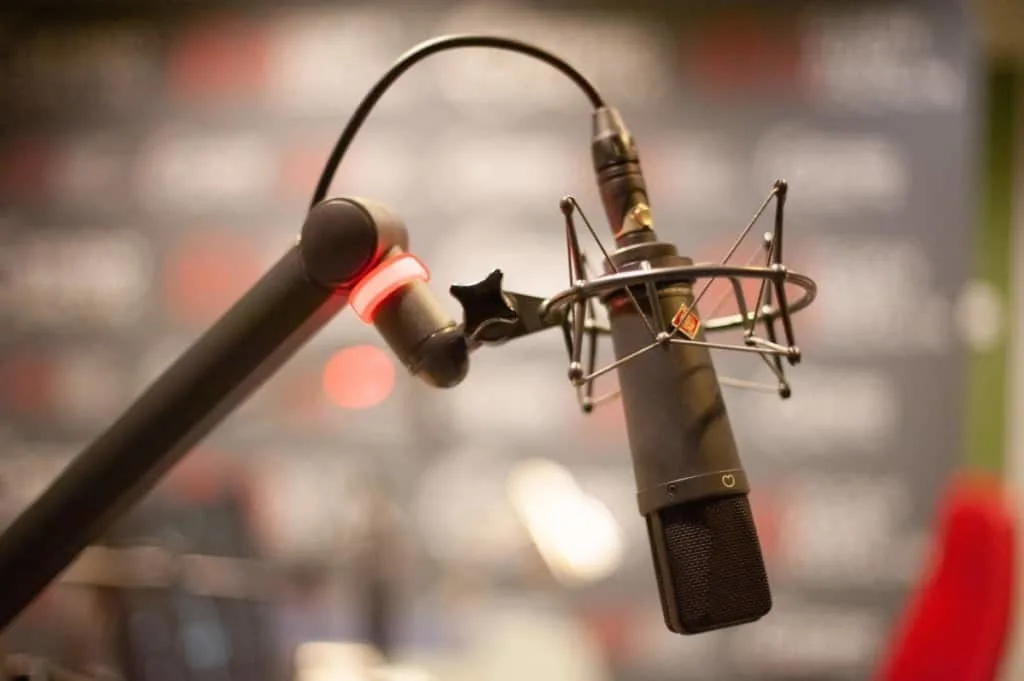Compression is one of the most popularly used vocal effects. There are multiple ways to add it to your mix, and many musicians and mixing engineers question whether you should compress the vocals during recording.
Should you record vocals with compression?
Recording vocals with compression saves time and effort, but it ultimately limits your possibilities in post-production. For convenience, the answer is yes. However, if you want more flexibility when mixing your vocals later on, then it should be avoided.
Compression that is added to vocals during recording cannot be undone.
This means that if you captured the perfect take, but the compression settings didn’t sound right, you would have to re-record the vocals and start over again. So if this method is used, the compression settings must be perfect to avoid disappointment.
In this article, we’ll explore the finer details of whether you should record vocals with compression.

Recording Vocals With Compression: The Pros & Cons
Whether or not you should record vocals with compression requires you to identify your intentions.
Do you want to produce a clean recording that leaves plenty of room for effects and mixing afterward? Or would you rather hear the vocal recording with compression instantaneously, and save yourself some time during the mixing process?
Generally speaking, you should only record vocals with compression if you are confident that the settings on the compressor will produce the results you desire. It’s worth noting, that compression interacts uniquely with different vocals. Consequently, if you are recording a singer whose voice you are familiar with, then recording the vocals with compression is a safer bet.
On the other hand, if you have limited experience recording a certain vocalist, or vocal style that a song requires, it will be difficult to get the compression settings perfect right away. It can take a long time to experiment with the various parameters on a compressor to make them perfectly suited to the vocal recording in question.
Essentially then, it all boils down to familiarity and confidence.
If you feel confident that you know exactly what settings to apply to the compressor to make it compatible with the vocals, then go for it. If, you are doubtful, bear in mind that you could potentially ruin a perfect vocal performance by over-compressing, or setting the threshold too high/low.
The table below summarizes the basic pros and cons of recording vocals with compression, versus adding the compression afterward.
| Recording Vocals with Compression | Adding Compression to Vocals Afterwards |
| Speeds up the process | Lengthens the mixing process |
| Compressor settings need to be perfect | Only the input gain needs to be set |
| Can’t be undone | More freedom when mixing |
| Could potentially ruin a good vocal take | Set parameters based on the vocal take |
| Instantly hear the vocals with compression | Need to use plugins or re-amp the vocals |
For those who are still unsure whether they should record vocals with compression, or leave it until the mixing process, perhaps choosing a middle ground would be a good option.
It’s possible to record vocals with a slight touch of compression while recording, without making it impossible to change afterward. Compressor pedals like this one cater for this.
Check out the JHS pedal here on Amazon.
By setting the compressor to limit the extreme peaks out of the vocal take but leave the finer details alone, you still save some time when mixing, but also retain the freedom to process the vocals without contending with heavy compression.
Why Vocal Recordings Need Compression
In addition to the points we’ve already covered, there are many reasons that recording vocals with compression are necessary.
Although compression is mainly used to control the dynamics of a vocal recording, it can also be used for tonal coloration, or to improve the singer’s performance.
Compression is a tone-altering effect in its own right. When pushed to its extreme limits, a compressor causes the frequency response to change and therefore changes the sound of the vocals. This is explained in detail in this video.
Due to the smoothening effect that compression has on vocals, it can improve a singer’s confidence in their performance. When the vocal is played back through headphones in real-time, the singer is able to hear the compression, as it is being recorded.
This is a definite reason for recording vocals with compression, rather than adding it retrospectively. The vocalist is able to hear how their voice sounds with compression added and can tweak their phrasing, tone, and timbre to their liking.
VST Plugins vs Compression Units
If you decide that you should record vocals with compression, then the next decision to make is whether to use a plugin or a dedicated hardware compression unit, like this one. Both of these varieties can provide you with good quality vocal compression, but they offer different options and features.
Check out the ART PRO-VLA Compressor here on Amazon.
Almost all DAW recording software comes with compressors built into their audio-effects rack. These are usually quite basic compressors, offering the standard parameters such as:
- Threshold
- Rate
- Attack
- Release
- Knee
If you record vocals with a VST compression unit, then you will need to add the effect or plugin to the recording track within your DAW before capturing the audio.
Monitoring will then need to be tweaked so that the effects channel is being played through the headphones as the recording is occurring.
Alternatively, when using a digital compressor you could choose to turn to monitor off so that the clean vocal is heard by the singer, rather than the compressed version. This will still result in the compression being added to the final mix, however.
Another advantage of using digital compressors when recording vocals, is that you can overcome the aforementioned problem of not being able to undo the compression.
By simply arming two separate tracks for recording, then applying the compressor to one of them and keeping the other clean, you have an unaltered vocal take to fall back on if the compression doesn’t sound right. This can save you the pain of having to re-record a vocal take that was perfect due to the compressor marring it.

Hardware Compressors
The most common method, should you choose to record vocals with compression, is to use a hardware unit. This has been the preferred way since the days of analog recording studios in the formative years of recorded music.
Hardware compression units are physical pieces of equipment, which act similarly to a preamp. You plug the microphone directly into the input of the compressor, and then the output runs into your interface, mixer, or computer. They are preferred for the warm, vintage tone of compression that they produce.
The great thing about recording vocals with analog compression is that you can adjust the various controls and parameters in real-time, and respond to the sound that is produced.
You can visibly see the levels and the response of the compressor on most hardware units, like this one for example. This is possible in digital formats but is less accurate and hands-on.
Check out this hardware compressor here on Amazon.
The disadvantage of using this method is that it affords you less flexibility after the recording has taken place. Everything that is recorded into the hardware compressor will be subjected to its effect, and therefore it is impossible to undo afterward.
Nevertheless, if you are confident in your settings and the vocalist is consistent, there’s no reason that adding compression as you are recording using a hardware unit shouldn’t be possible.
Experimentation Is the Key
Ultimately, like all questions regarding music, production, and mixing, the answer is subjective. It depends largely on what your intentions are, and the results you are aiming for.
Recording vocals with compression is a technique that has been used for many decades by some of the most distinguished producers and artists ever. Many prefer to add the effect during post-production, to give them more flexibility.
- The number one way to work out whether you should record vocals with compression is to experiment.
Try to get your hands on a hardware compressor (there are plenty of affordable second-hand ones available) or simply use the audio effects in your DAW.
There’s no right or wrong when it comes to compression on vocals. It has been used in every possible way imaginable, so it really depends on what you want to create.
By playing around with different ways to record vocals with compression, you will develop your own unique style and preferences that can then be expanded on.

Related Questions
What does the threshold control do on a compressor?
The threshold control on a compressor decides at what level the compression kicks in. If the audio reaches a higher volume than the threshold, the compressor becomes active. When the threshold is set to a low value, the audio is compressed more heavily.
Do mics have built-in compression?
Although some rare microphones do compress the audio as they record, most of them need to be combined with a separate compressor to achieve the desired result. This could be a hardware version or a VST plugin.
Where should compression go in a signal chain?
Dynamic effects, like compressors, should be placed at the very beginning of a signal chain. This is because all of the effects which are placed after the compression will be subjected to the effect.
I hope this article has answered all your questions on recording vocals using compression, just remember there is no right and wrong way, just what suits the circumstances the best.
Happy Recording.
